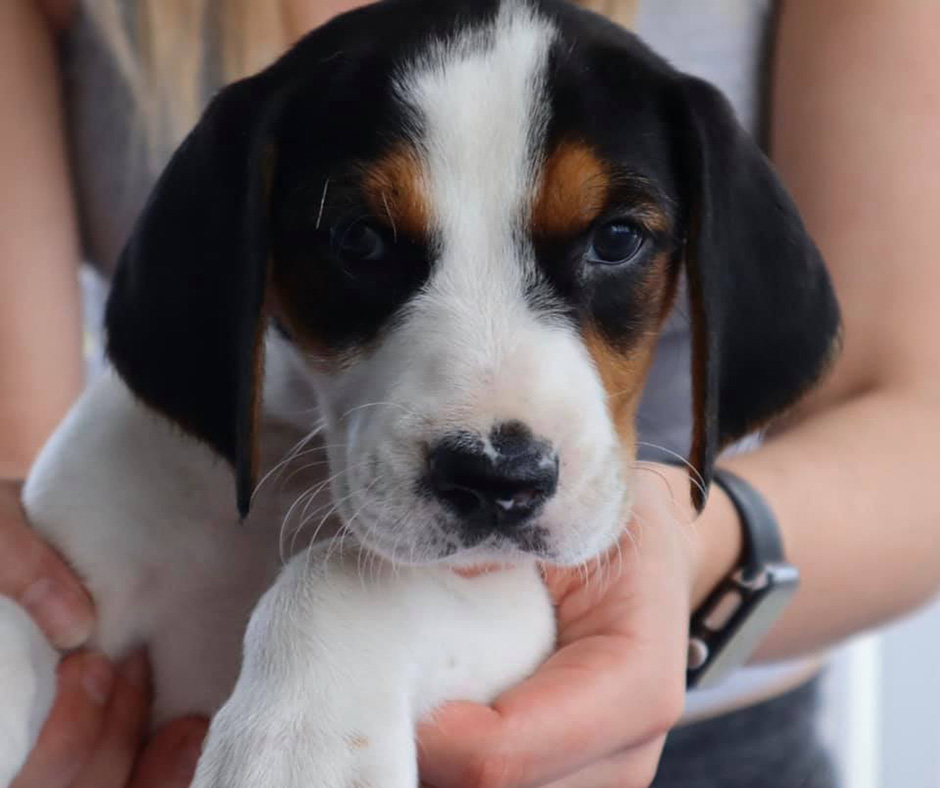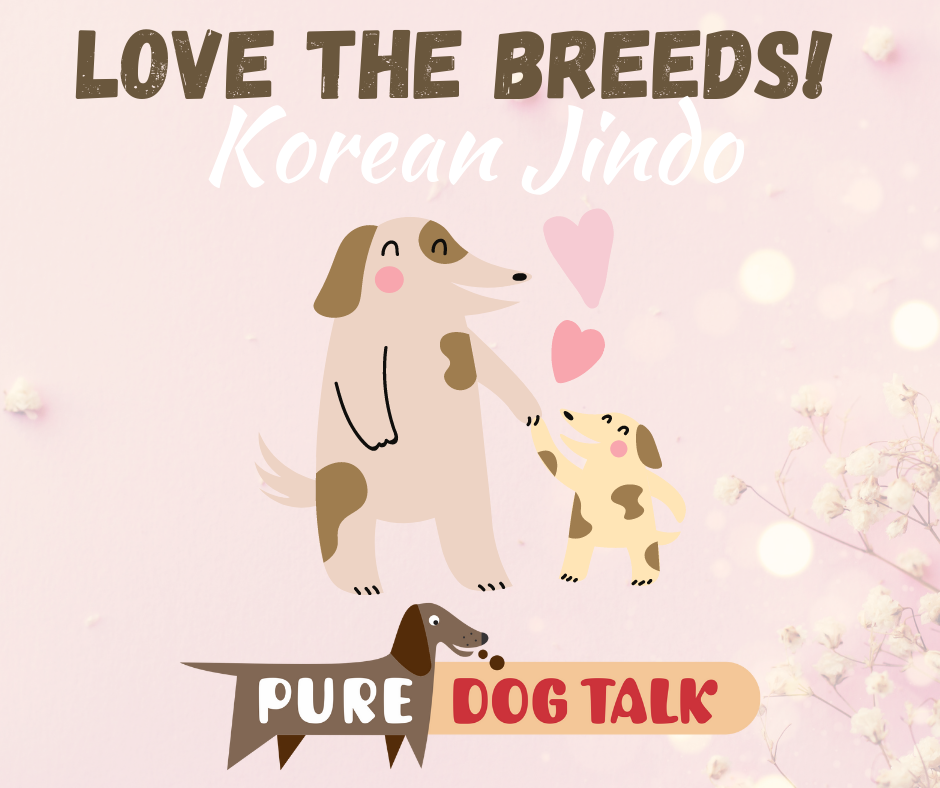607 – Keeping Foxhounds Alive Into the 21st Century
Keeping Foxhounds Alive Into the 21st Century
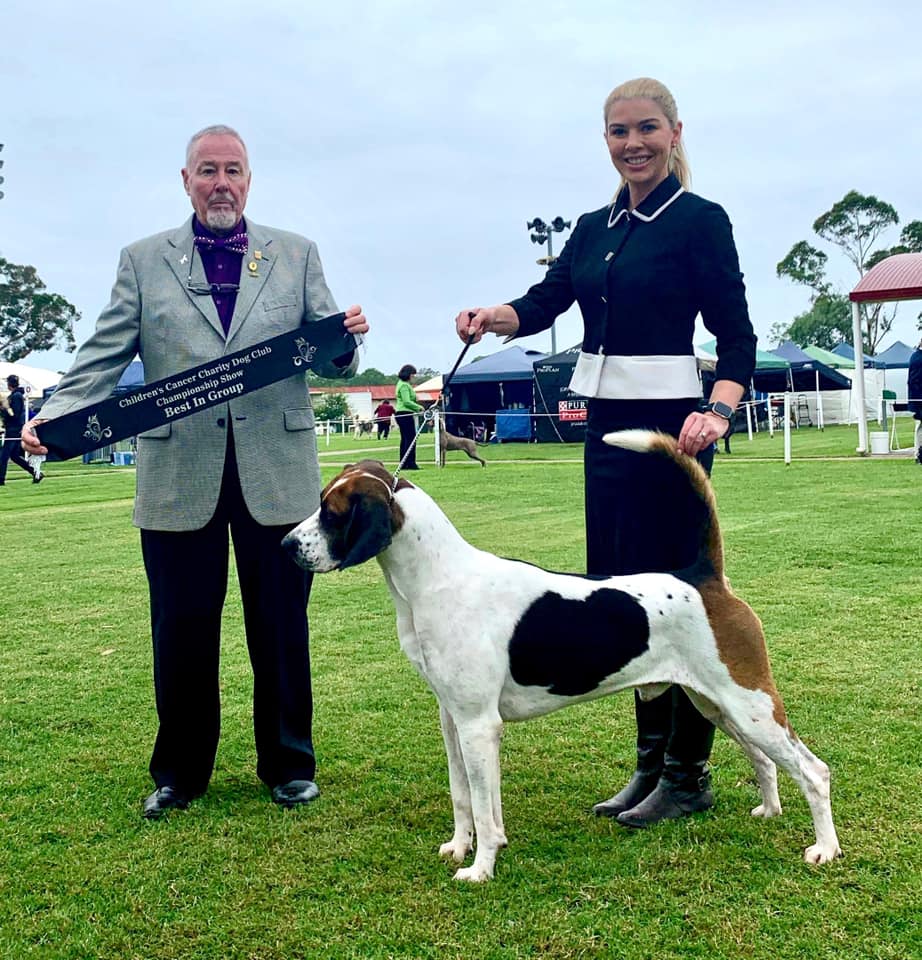
Brigette Bryson with one of her Foxhounds.
Brigette Bryson, second generation breeder of Foxhounds at Foxhunt Kennels in Australia, joins host Laura Reeves in a wide ranging conversation about English Foxhounds, preserving the history they represent and how she hopes to keep the breed alive into the 21st century.
There are three breeders of English Foxhounds listed on the US National Club website. In 2022, the breed dropped to last place in numbers of dogs registered with AKC. Although the breed lives on in the packs around the globe, their popularity has certainly faded from their heyday when hunting fox was both useful and fashionable in much of the world.
“I don’t know if that’s ever going to change dramatically,” Bryson said. “I have this conversation with people regularly. I don’t know that you can ever make them mainstream. Their history is so deep. And it’s entrenched in people’s brains that this is a hunting and a working breed that’s not gonna fit in my suburban backyard.
“So I don’t know if you can ever change that. My goal is just to see them survive. That will happen in the packs. There’s many packs. You know, we’re not gonna have a figure of how many dogs exist in those packs, but they’re there. And I think that they will always be there through people like me that have maybe grown up in that pack and they’re obsessed with the breed, so they’ll keep it going.
“What I would like to see is if we could have a few breeders in each country breeding them, that would be a success for me. It’s enough to keep them alive and not let that piece of history die for me. I think I really enjoy the history of the breed. I love that almost every kennel club you visit around the world is gonna have a painting of Foxhounds hunting. I think it’s important to maintain it for that reason.
“I of course would love to see them become more popular with the general public. I just don’t know if that’s possible. The sizes of houses and properties and everything, it’s gonna be the same problem for all large breeds. It’s getting smaller.
“And realistically, as much as you can raise them to live in a smaller environment, it’s not ideal for them and people would have to put in a lot more effort to meeting their energy needs. My goal is just to get them out there with breeders around the world. That’s what I’m trying to achieve now.
“There’s not a single registered breeder that has had a litter in the UK that I can think of in the last 10 years. We have one active registered breeder in New Zealand who’s fantastic. And there’s a few really healthy packs over there that have some dogs from us as well.
“And in America, there’s a handful if they even keep breeding, but they start aging out too. And that’s what’s happening here. There was four main breeders that we had, myself and my parents before me worked in with. One of those hasn’t bred a litter for a decade. And the other two are at the point where they’re saying to me, I don’t know if I’ll have any more just because they’re getting a bit older.
“And (Foxhounds) are incredibly healthy. Now that’s another one that’s complex. Foxhounds have been largely inbred since the beginning of time. But with that, only the strong survived. There is no hereditary diseases in the breed.
“Part of that is that there hasn’t been human intervention. So, all the debates that people have about inbreeding, and I have this debate with people regularly, because they’ll say to me, you’re gonna have to outcross. And I say, well, you need to outcross because you’ve got problems you need to fix.
“But if I don’t have any problems, why do I need to do that? A litter we had last year was from a six -year -old maiden bitch, 15 puppies. So, we’re not having those issues that other people have. They’re incredibly healthy. And people buying these dogs that they spend thousands and thousands and thousands of dollars trying to keep alive, I can sell you a Foxhound that will only have to go to the vet for its vaccinations.”
524 – Norrbottenspets: “Your GPS in the woods”
Norrbottenspets: “Your GPS in the woods”
Gabi Vannini, breeder and fancier of Norrbottenspets, joins host Laura Reeves for a Love the Breeds episode during Rare Breeds month at Pure Dog Talk. Currently judged in the Miscellaneous group with AKC, this ancient hunting dog is used to tree game for the hunter.
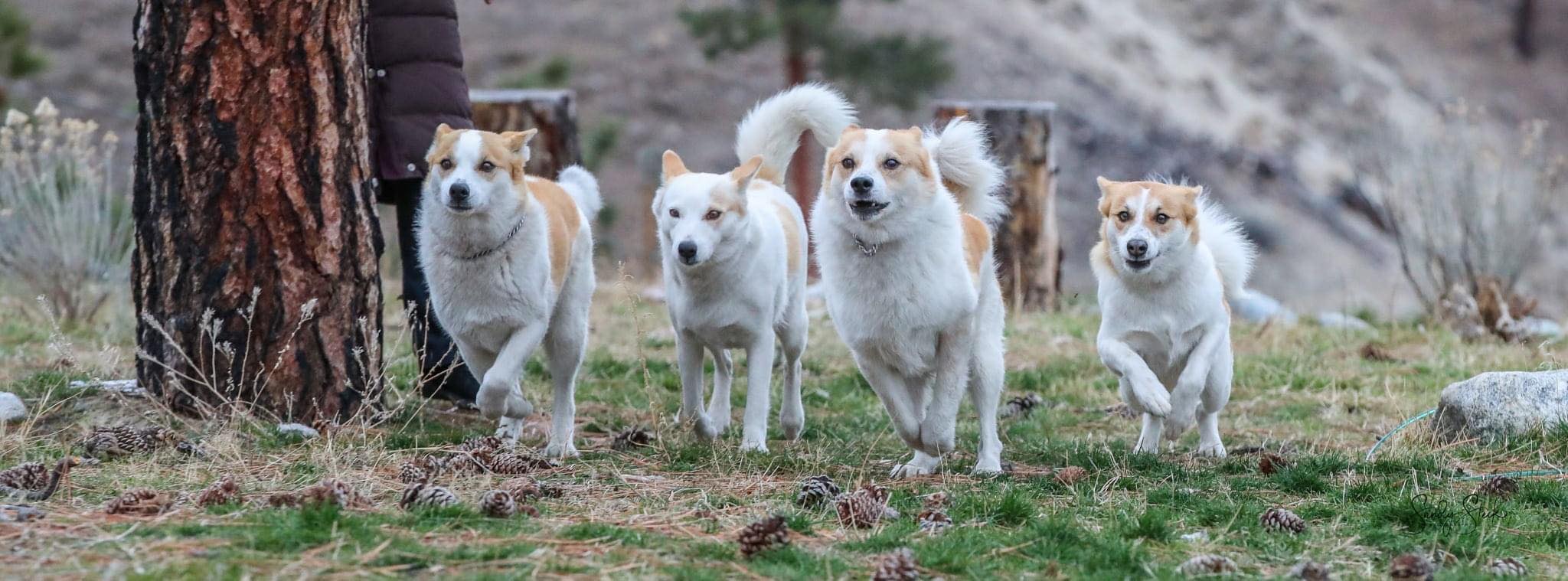 “They’ll be in the hound group,” Vannini said. “They’re hound spitz, so they don’t look like every other dog in the hound group necessarily and in Europe they are in the primitive group. They are tree barking hunting dogs, so they’re gonna be kind of like a coonhound as far as barking at things up the trees and then letting you shoot.
“They’ll be in the hound group,” Vannini said. “They’re hound spitz, so they don’t look like every other dog in the hound group necessarily and in Europe they are in the primitive group. They are tree barking hunting dogs, so they’re gonna be kind of like a coonhound as far as barking at things up the trees and then letting you shoot.
“Back before we had GPS collars and fancy things, they were kind of your GPS in the woods because they would go hunting on their own and find something for you and then bark their fool heads off until you found them.”
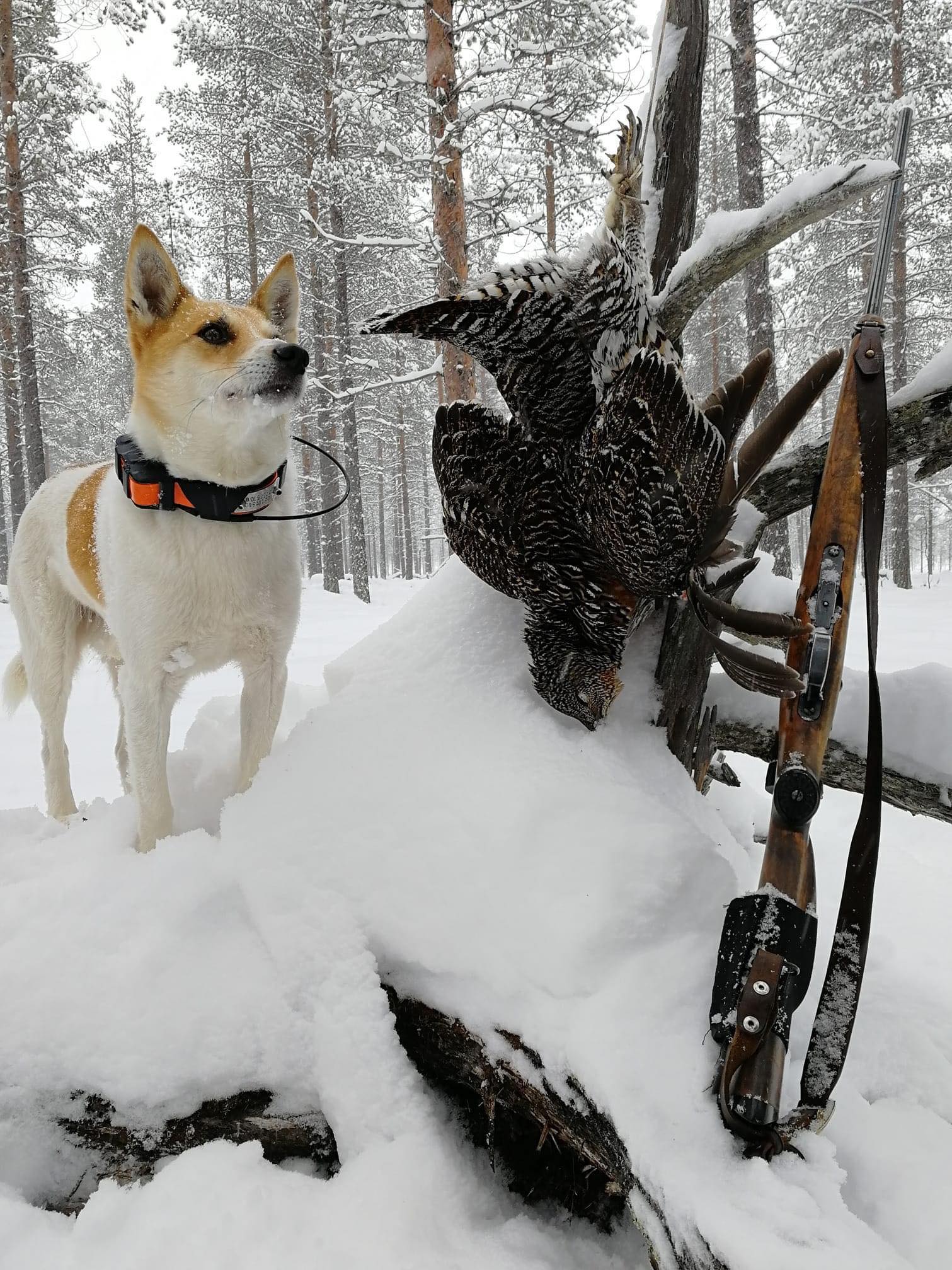 Related to the solid red Finnish Spitz, the Norrbottenspets were the parti colored members of the ancient breed. As breeders selected for the solid color dogs, the spotted dogs dwindled away, Vannini noted, “They actually got really close to being extinct before there was kind of a project made to go out and find some of them.”
Related to the solid red Finnish Spitz, the Norrbottenspets were the parti colored members of the ancient breed. As breeders selected for the solid color dogs, the spotted dogs dwindled away, Vannini noted, “They actually got really close to being extinct before there was kind of a project made to go out and find some of them.”
More popular in their native Sweden and Finland, Vannini estimates there are only about 250 in the US.
“They are really, really nice dogs and honestly a really well-kept secret. I think a little bit of it is the barking stuff. If they’re hunting, they’re working but other than that they’re really not obnoxious or reactive barkers.
“(At 16-18 inches tall), they’re nice little go anywhere dogs. We’ve got a lot of dogs in and out and that’s been one of my big things is having dogs that are very tolerant of that. They’re just really good with other dogs and really sweet with people.
“It’s a double coated breed. Typically, they drop the coat every six months kind of thing, but it’s a nice shorter double coat. We’re actually explicitly not supposed to blow dry them for shows. They shouldn’t be back brushed and fluffed up. The coat should be a tight natural easy coat and that’s something that’s really nice about them and easy to live with.”
Long lived with few genetic health issues, Vannini noted, these hardy little dogs often live well into their teen years. Typical hounds, they require creative training but are not demanding or needing a job.
485 — Korean Jindo: Independent, reserved, polite and serious
Korean Jindo: Independent, reserved, polite and serious
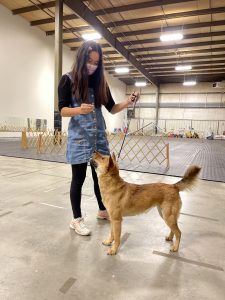
Hannah Yi and her Jindo practicing for Junior Showmanship competition.
Hannah Yi and Nichole Royer join host Laura Reeves to share information about the rare and fascinating Korean Jindo.
Developed on Jindo Island, off South Korea’s coast, as an isolated population of centuries old village dogs, the breed is a cultural icon in its home country. Renowned for its ability to find its way home, a feature memorialized in Korean culture, Jindo are dedicated hunting dogs and very serious about guarding their home.

Jindo in South Korea.
“They were developed as a pretty hardcore hunting and guard dog,” Royer noted. “They are generally used for hunting small game, but they also hunt deer and even wild boar in small groups. They are not a breed that developed hunting along with their owners. They actually expected Jindos to go out and catch small game on their own and bring it home.
“When they chased down something like a deer, and I should add the deer and the wild boar on Jindo island are not the size of the deer and wild boar we have here in the US. The deer are much smaller … a small group of Jindos would chase them down and then a couple of the Jindos would stay there to guard the deer, while one or two dogs went to find the owner.
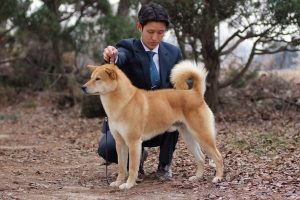
Jindo in South Korea
“(They were) designed to go out, be able to think for themselves, be able to make their own decisions. They take their owner’s wishes under advisement, but really are not designed to go around saying ‘what can I do for you.’ It’s a partnership rather than being what the dog can do for their owner.”
“I visited Korea a couple of times as a child,” Yi said, “and in the neighborhood and a bit of the rural parts, you would see them outside … I always (had them) pointed them out ‘hey, that’s a Jindo dog.’ They’ve always been a really independent spirit. Even though I didn’t know much about them as a kid, I just knew that (they were) culturally ingrained in your knowledge.
“(The story in Korea is) there was this dog and it was a white Jindo dog … it lived with its elderly owner in the city. But one day the owner had to sell the dog. So it was really far away. Then seven months later, the dog appeared back to the owner’s house. It found its way home. So that’s just really stuck to a lot of people. There are a lot of children’s books and merch made about that and it was just really interesting to me. I’ve just always known that story.”
While Dog Aggression is a serious awareness with the breed, Royer notes, “They are intelligent guard dogs that are not looking for that excuse. They will act if they have to, but they’re not looking to want to act.
“Same sex dog aggression is absolutely the norm in this breed. This breed in public should not be aggressive towards other dogs without good reason. However a strange dog getting in their personal space absolutely is good reason. They do not tolerate fools lightly and they do not tolerate rude behavior from other dogs. Jindos never pulled their punches. If they choose to use their teeth, they intend to do damage.
“Jindos tend to be a one person or one family dog. They should never be aggressive without good reason. But they also generally are not going to be like my malamutes who will jump into everybody’s lap and everybody is their new best friend. They range from being very reserved ‘I don’t know you, so I don’t really want you touching me’ to being calmly friendly. Very polite.”

